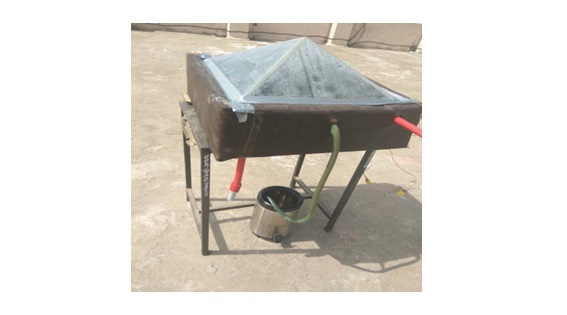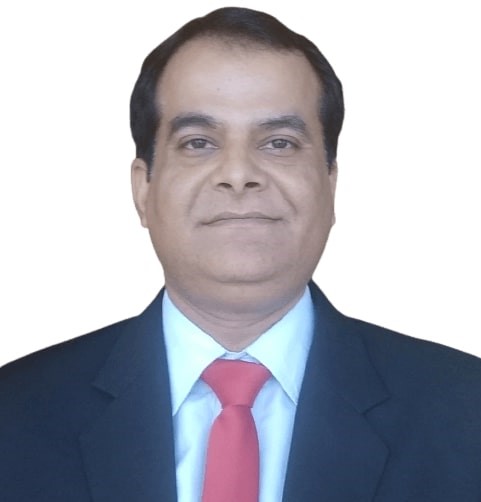Domestic Wastewater Treatment Using Natural Filtration and Solar Distillation Processes

DOI:
https://doi.org/10.54060/a2zjournals.jieee.117Keywords:
Natural filtration, solar distillation, total dissolved solids, domestic waste water, water treatmentAbstract
Fresh water is most important daily requirement for human survival. On one hand many regions/countries are facing challenges related to availability of potable water for drinking and daily needs, on other hand water is wasted daily from different domestic applications. Processing and reuse of domestic waste water can help bridge gap between demand and supply. Present study describes a domestic waste water treatment process using combined natural filtration and solar distillation methods. In natural filtration process husk fibre, activated carbon and coconut husk fibre were used as filters. For solar distillation a pyramid shaped distillation unit is used. The samples of domestic waste water were collected from laundry, kitchen and house cleaning applications. The pH, TDS (total dissolved solids) and DO (dissolved oxygen) values of domestic waste water samples and water after treatment were tested. The results after treatment reveal that the values of TDS, pH, and dissolved oxygen are close to the standard values required for potable water which can be further used in different applications.
Downloads
References
B. C. Meikap, G. K. Roy, “Recent advances in biochemical reactors for treatment of wastewater”, IJEP, vol. 15, no. 1, pp. 44-49, 1995.
“Food and Agriculture Organization of The United Nations, Review of World Water Resources by Country,” Review of World Water Resources by Country, Water Re-port, 2013.
“United Nations Environment Program, Clearing the Waters: A focus on water quality solutions,” UNEP, 2016.
T. Ghose, “edition of Water Supply Engineering: Environmental Engineering,” Indian Chemical Engineering, vol. 43, pp. 118–122, 2001.
S. Garg, Sewage Disposal and Air Pollution Engineering, 24, New Delhi, vol. 24. New Delhi: Khanna Publishers, 1979.
A. Vinod, V. Reddy, and G. V. Reddy, “Dynamic behaviour of a fluidised bed bioreactor treating waste water,” Indian Chemical Engineering-Sec A, vol. 45, no. 1, pp. 20–27, 2003.
“Food and Agriculture Organization Of The United Nations, Review of World Water Resources by Country,” Review of World Water Resources by Country, 2003.
J. Burch and K. Thomas, “An overview of water disinfection in developing countries and the potential for solar ther-mal water pasteurization,” National Renewable Energy Laboratory (U), 1998.
“Centers for Disease Control and Prevention, Atlanta”, Waterborne Diseases, 2012.
“Centers for Disease Control and Prevention, Atlanta”, Global Water, Sanitation, & Hygiene (WASH), 2015.
M. Aravind and A. Rahna, “Treatment of Industrial Effluent with Coir pith and Charcoal Infused Soil Me-dia,” International Journal of Engineering and Advanced Technology, vol. 8, no. 4, pp. 11–15, 2018.
S. Sharma, A. Datta, A. Kotwal, and S. Singh, “A Case Study on Efficient Filter Media Adding Rice Husk,” International Journal of Scientific and Technical Advancements, vol. 5, no. 1, pp. 29–32, 2019.
R. Priyanka and M. Vagish, “Water Quality Maintenance by Developing a Biofilter Model Using Coconut Shell Activat-ed Carbon and Rice Husk as Absorbents,” International Research Journal of Engineering and Technology, vol. 5, no. 8, pp. 41–48, 2018.
F. Sadon, N. Ibrahem, and S. Ismail, “An overview of rice husk applications and modification techniques in wastewater treatment,” Journal of Purity, Utility Reaction and Environment, vol. 1, no. 6, pp. 308–334, 2012.
A. Sophia, C. Catherine, and D. Bhalambaal, “Utilization of Rice-husk and Coconut Shell Carbons for Water Disinfec-tion,” J Environ. Science &Engg, vol. 55, no. 1, pp. 9–16, 2013.
V. Devi, K. Priya, N. Shivasankari, M. Murugaiyan, A. Saarathy, and H. Kirubakaran, “IndustrialWastewater Treatment Using Solar Still for Achieving Zero Liquid Discharge, Waste Water Recycling and Management,” Nature, pp. 233–238, 2019.
R. Asadi, Z. Suja, F. Ruslan, and H. Jalil, “The application of a solar still in domestic and industrial wastewater treat-ment,” Solar Energy, vol. 93, pp. 63–71, 2013.
P. Pisani and L. Lahnsteiner, “Direct Reclamation of potable water at Windhoek’s Goreangab reclamation plant, De-salination,Water Science & Technology, Namibia,” vol. 55, pp. 441–448, 2017.
R. Foster and S. Eby-Martin, “Solar distillation providing potable water for border colonias”, Reno, Nevada: American Solar Energy Society, 2002.
A. Hanson, W. Zachritz, K. Stevens, L. Mimbela, R. Polka, and L. Cisneros, “Distillate water quality of a single-basin so-lar still: laboratory and field studies,” Sol. Energy, vol. 76, no. 5, pp. 635–645, 2004.
H. Kumar, S. Sharma, and N. Sengar, “Industrial Waste WaterTreatment Using Natural Filtration and Solar Distillation Methods,” Advanced Research in Solar Energy, pp. 37–48, 2021.

Downloads
Published
How to Cite
CITATION COUNT
License
Copyright (c) 2020 Mahima Prajapati, Shivanshu Sharma, Namrata Sengar

This work is licensed under a Creative Commons Attribution 4.0 International License.

























